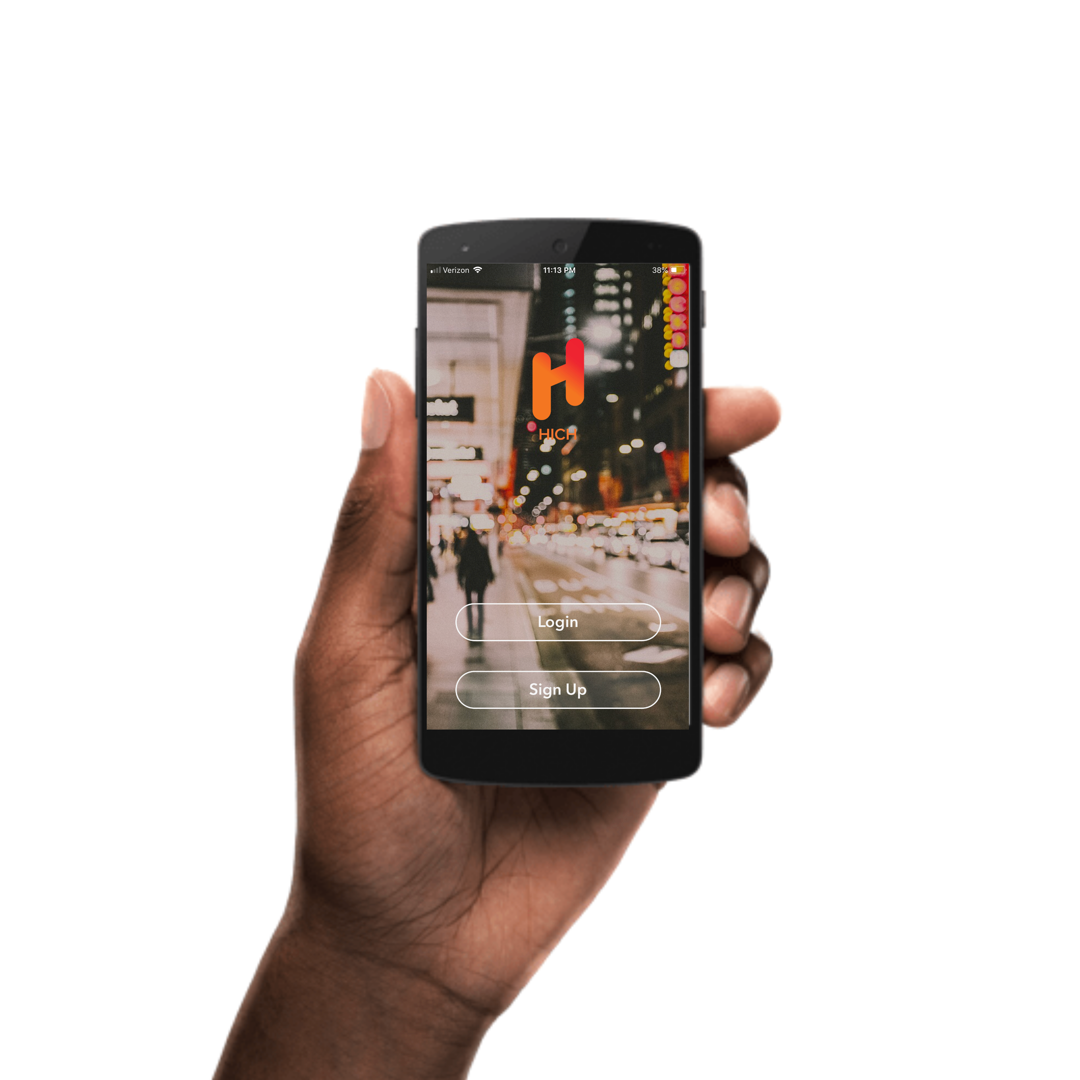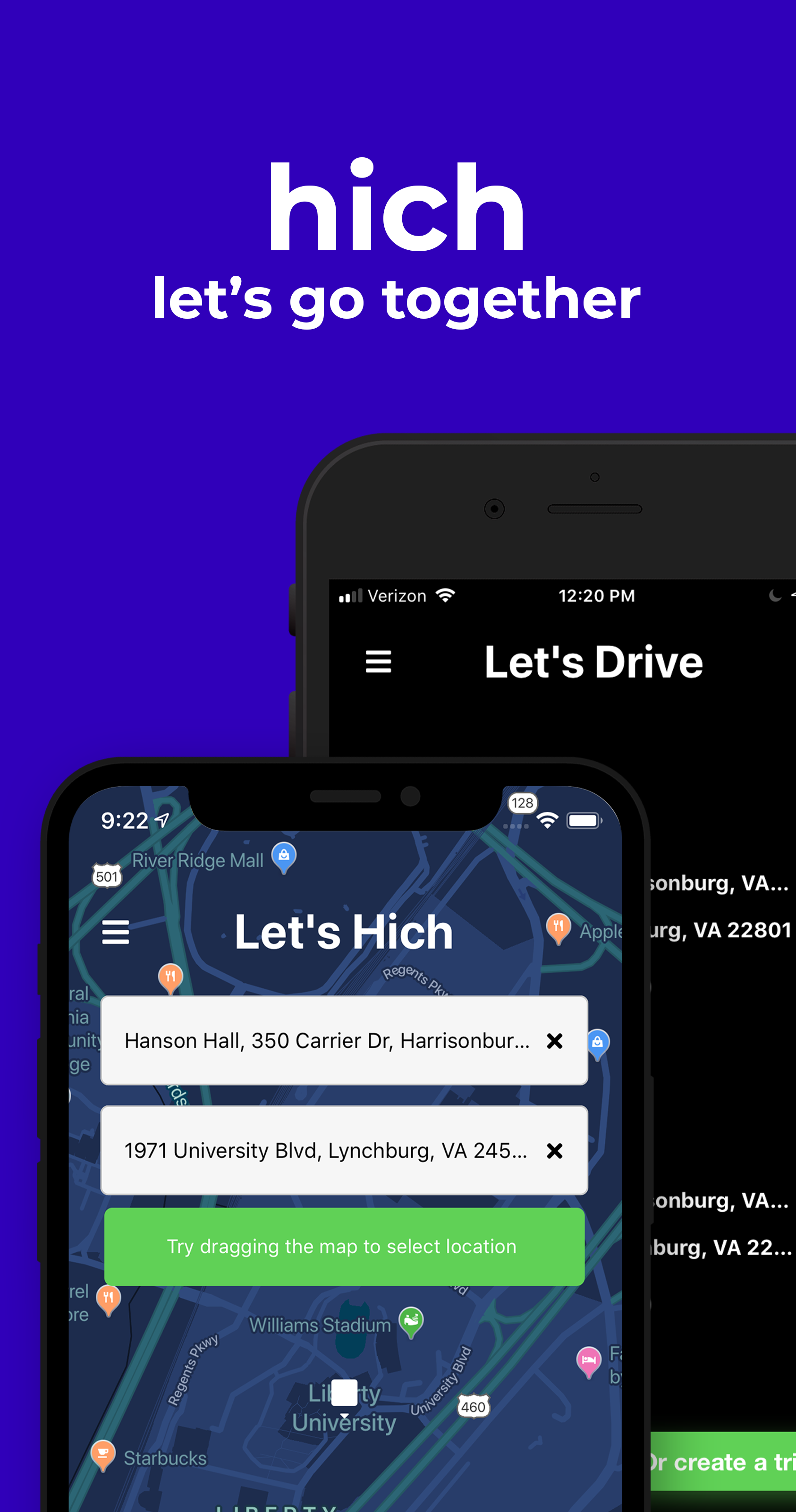The Social, Ride-Sharing App.
In 2017, I co-founded Hich, a closed network ride-sharing application exclusively for college students. Hich connects students who need a ride with students heading in the same direction and also duals as an on-demand ride-sharing service provided by student drivers. With Hich, students can earn money on their own time and as passengers enjoy peace of mind knowing that they’re able to ride with other students.
Features.
Unlike popular ride-sharing apps, Hich allowed users to select their driver from a list of available drivers, set same gender driver preferences, and add other users as friends 😊 which made it easier for that rider to select that driver next time.
Hich had a dual-user mode, enabling users to easily switch between rider and driver mode within the same app! Hich featured both a carpool feature for long distance ride sharing as well as an on-demand feature for short distance trips. Additionally, all Hich users are verified students who registered using their active .edu verified email address.
Onboarding.
We developed our app so that students could sign up with the app through their verified .EDU email addresses to ensure legitimacy of the user during their time in college.
Audience.
When designing the user interface & experience (UI/UX), we aimed to capture a very specific customer market segment; college students between the ages of 17 and 22. Unlike mainstream players who fear losing customers due to overcomplicating usability with excessive features and intricate interactions like swiping or dragging, we found that our users responded well to the trendier look and feel of our interface. Additionally, we really focused on the simplicity of chatting, as we saw the feature exploding among other popular consumer apps and products.
User Acquisition.
A user is more likely to use an app that is recommended by a peer. Implementing feature sets and flows that emphasized user acquisition and retention allowed us to stay lean in our in-app marketing approach. Features such as signing in with Google or Facebook, allowing Hich to sync phone contacts, adding Hich friends, and offering a ride credits and incentive system promoted greater download rates.
Testing.
Before building and implementing our user experience design on the front end, we completed a variety of A-B or split testing strategies to identify popular design trends that best fit within our customer segment while also aligning with the possibilities of our existing, react-native architecture. We selected a variety of brand guidelines including color and component styles, button shapes, sizes, and locations that we tested on real customers (with their consent of course). And we decided to implement dark mode because of the frequency of users needing to use the app during the night time.
The Stack.
For the front-end, we used Facebook’s React-Native (RN) framework, allowing us to deploy on both IOS and Android OS using a single platform. React-Native offers a variety of benefits, mainly its ability to create beautiful, high performing interfaces. RN allowed us to get a working prototype off the ground faster due to the use of the pre-developed, re-usable components that are available in their open-source library. RN also supports a wide range of third party plug ins, which allowed us to use public API keys for features such as mapping which we didn’t create ourselves.
For the back-end, we used Google Firebase. Firebase offers a host of benefits for smaller companies looking to deploy cloud applications quickly and scale appropriately. Firebase has a real time, cloud hosted database that allowed us to not have to create our own database or API, taking the weight of backend creation and management off of our team and letting us focus on making a beautiful application that attracts users.
Profile Discoverability.
Allowing users to find and add friends via username search is a feature set that differs Hich from other mainstream ride-sharing apps where there is limitations between rider and driver interactions. With Hich, we believe that people and communication are at at the heart of a stable platform. Profiles and messaging add a much needed human component that provides an extra layer of trust and community for users.
Minimalistic Design.
We implemented a modern yet minimalist design across our platform, emphasizing simplicity while still maintaining a contemporary look and feel. Our animations and buttons leveraged newer trends seen in popular social apps like Instagram and SnapChat, giving our users a sense of familiarity. Our placement and choice of buttons, fonts, colors, spacing, and sizing were and still are tested for like-ability.
The Process.
We implemented the SCRUM framework, an agile delivery approach that helps our teams to maximize the delivery of customer value while maintaining a clear, repeatable workflow. This agile process allows us divide our software development into small, time boxed periods or sprints which would emphasize one particular feature at a time. SCRUM allows our team to objectively measure work against time, maintain focus, quality, and motivation on a project, whiling allows for continuous delivery. As the project progresses, our team makes necessary revisions in response to changing customer needs, architecture demands, or shifting markets.
The Beta.
Our first iteration of designs focused purely on the on-demand style rideshare whereby a driver could select a ride from a list of rides in a public queue. This helped us overcome our challenge of supply demand management, a term popularized among the Uber and Lyft ride-share giants and other delivery service models where supply and demand would challenge the ability to find fair market rates and product reliability.



Or scan the QR code to download the app.


















